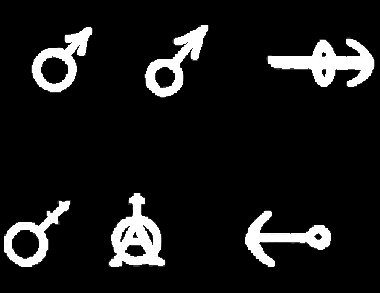Arrows can be seen everywhere, from traffic signs and road markings to chemical equations. Santiago Alvarez, Universitat de Barcelona, Spain, outlines in an Essay how the symbol of an arrow has evolved from its use in mythology and art to its use in chemical equations in single, horizontal, vertical, and diagonal forms, as well as representing electron spin and radiative processes.
Arrows were used in alchemy and early chemistry representing elements or compounds, but have then been replaced by other symbols. Lavoisier first proposed a sort of chemical equation, connecting reactants and products with an equals sign, around 1860 these begin to appear practically in all chemistry books, but only 1884 Van’t Hoff proposed that the equals sign should be replaced by a double arrow to stress the reversibility of some reactions. The single arrow used today in chemical equations was adopted one decade later.
Besides their extensive use in chemical equations, arrows have been assigned a variety of other meanings in chemistry. The use of arrows by artists, in particular Paul Klee’s use of the half arrow, is also remarkable and also related to chemistry.
- Chemistry: A Panopoly of Arrows,
Santiago Alvarez,
Angew. Chem. Int. Ed. 2012.
DOI: 10.1002/anie.201101767 - Chemie: ein Köcher voller Pfeile
Angew. Chem. 2012.
DOI: 10.1002/ange.201101767




